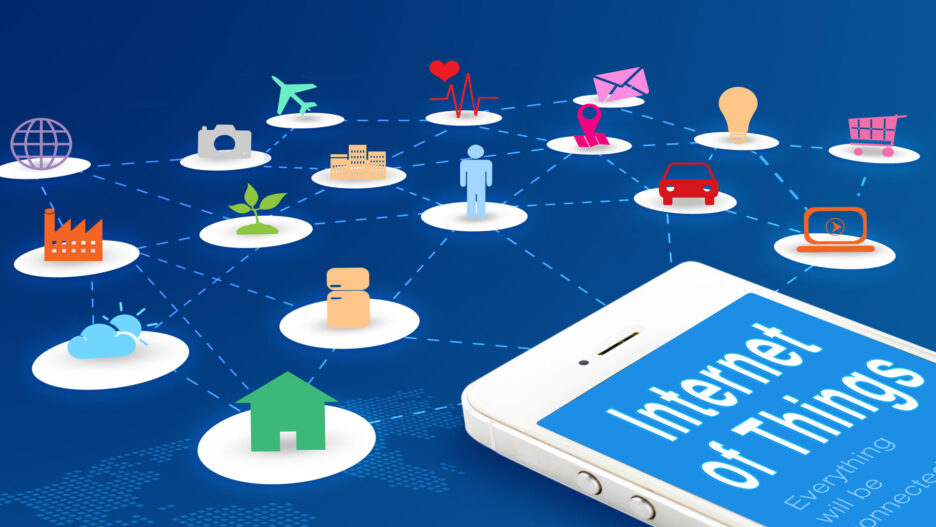Build a business case
With Internet of Things development, strategic planning and the creation of a sound business case are crucial to ensure the solution’s success. The business case is the foundation that sets up the path before building a full-blown IoT concept and solution.
Regardless of whether companies are just embracing the IoT wave or are seasoned companies that have dealt with IoT solutions before, they must l build a solid business case to identify the key characteristics of the IoT solution. This can be achieved through intensive research of the consumer market and self-evaluation to determine the reasons why customers need the IoT solution, why they would pay for it, what uses would the solution have, and what the risks and challenges are for the project.
As stated by James McPhail in his Forbes Tech Council post, IoT solutions must be simple for anyone to and shouldn’t require an expert or extensive management. This is accomplished by employing user-centric design principles.
With this in mind, a strong business case provides confidence in the solution and ensures that the right steps and tools are leveraged to design for simplicity and effectiveness. A comprehensive business case articulates the means and resources of a project’s success by presenting all the details, along with its potential risks and uncertainties. A robust foundation provides solid ground to kick-start IoT solution development.
These are the steps to build a successful business case:
- Identify suitable use cases and use them as guidance to develop a compelling and constructive business case draft.
- Research and assess areas of opportunity to identify where productivity, efficiency or value can be gained in the organization. Whether it’s from strategic levels or from production levels, areas of improvement can be found anywhere within an organization.
- With research, the collected data is meant to be turned into actionable insights. This step is aimed at identifying meaningful and valuable data to decide the areas where optimization and improvements can be made.
- To avoid downtime, companies process, model and analyze data to predict outcomes and problems that may arise in an effort to increase productivity and effectiveness.
- A proof of concept should be generated to validate the project’s budget Once the business case is fully developed through these steps, it is then presented for approval prior to moving on to the next step in the IoT solution development process.
Select the technologies involved in the IoT solution
When trying to develop an IoT solution, technology is your best friend. From devices, sensors, actuators, gateways and platforms, IoT technologies must be carefully selected prior to developing the IoT solution to understand and address technical gaps and get to know the tech players that support the solution.
Technology resources support the connected Internet of Things development of the solution, making it simple, efficient and scalable. Additionally, the right technologies monitor and optimize performance over a wide range of devices.
The selection of the right technology stack accelerates the IoT development process significantly by laying out the groundwork with the right tools to achieve the expected outcomes by choosing protocols, standards, languages, and frameworks. Each layer in the technology stack must be seamlessly integrated and be able to communicate with all other layers.
Technologies can be categorized into three areas: sensors, microcontrollers, and internet connectivity, and service platforms.
Sensors are embedded in devices or physical environments to collect information. Microcontrollers and internet connectivity share the information collected from the sensors. Service platforms personalize and control the device’s end-to-end experience.
In this era of digital revolution, technologies are competing for dominance, with new and advanced features being added everyday. With the help of a business case, the functionalities and attributes to be leveraged to build the IoT solution are identified early in the development process.
Develop a comprehensive IoT strategy
A solid and well-rounded IoT strategy helps companies successfully approach IoT solutions. To reach a successful outcome, companies must bring together all layers of a technology stack and key players of the IoT solution like sensors, cloud storage, processing capabilities, machine learning and more. The end result should be a comprehensive set of steps that will bring transformation and progress to the development process.
As stated by Forbes, “without a clear vision and a model of the concrete steps needed to achieve success, organizations will continue to struggle with implementing IoT.” This rings true in a digital world that is continuously evolving and sometimes loses structure and maturity.
Our suggestion is to perform a thorough assessment of these four aspects to build a strong and comprehensive IoT strategy for development:
- Market challenges
- Deployment challenges
- Market maturity
- Device management
Design for scalability
According to market trends, by 2025 there will be over 75 billion connected devices (Internet of Things) worldwide. Therefore, it is of critical importance that companies develop IoT solutions with a foundation for scalability.
With the growing number of interconnected devices, scalability is critical to an IoT solution development process, as the system should be capable of handling expanding workloads or have the potential to be amplified to accommodate growth.
Achieving scalability is no easy feat. Companies must assess, strategize and plan ahead of time for the capacity that may be needed down the road to building a custom solution that fits. A smart prediction about future capacity needs helps reduce risks, avoid pitfalls, and control scalability.. To achieve this, the right platform, framework, and technology stack should be configured to allow integrations, enable expansibility, and foster connectivity on a grand scale.
Scalability is no longer an option, but a necessity for the success of a comprehensive IoT solution.
Design with privacy and data protection in mind
Internet of Things security in terms of privacy and data protection is challenging, mainly because of the many contributing factors that play a role in the security strategy. IoT backends oftentimes require security levels similar to a web system, while also taking into consideration the physical security of devices and networks that are connected.
A rigorous IoT strategy for privacy and data protection is intended to secure data in the cloud, during transit over the public internet, and provision devices.
Given the wide variety of endpoints that can be connected in the Internet of Things, IoT systems must be ready, secured and capable of legitimizing security aspects such as authentication, access, privileges, policies, identity management, and more. A secure IoT system must be designed to accurately determine the validity of endpoints in a network to avoid data leakages, cyber attacks, and breaches. To put it simply, the Internet of Things security strategy intended for privacy and data protection is one of the most important decisions when designing an IoT solution.
Challenges of building a comprehensive IoT solution
- Lead time to roll out an update: Because IoT solutions are layered, updates that are usually considered simple can turn complex based on how modular and testable a software architecture actually is.
- Security: Because in the essence of IoT all devices are connected, a single vulnerability in a single device’s software can be misused or exploited to harm other devices in the network.
- Platform: Selecting the right platform can pose a challenge due to the sheer volume of available options out in the market. Additionally, it’s hard for IoT developers to commit to a single platform that may become outdated over time as emergent technologies arise constantly. Compatibility is also at stake when selecting the right platform, which is why it’s important to analyze the elements involved to ensure compliance and affinity.
- Standardization: With the rising number of communication protocols, standardization can be tricky. The physical design and sensor placement must be detailed in a connectivity strategy to build a sustainable IoT solution that is standardized and reliable.
- Storage and analytics: It’s all about data, data, data. IoT developers must focus on building a robust system that is capable of supporting massive inflows of data, with the right tools to store it, analyze it and derive value from it.
How companies use IoT to further their goals
Out of all the emerging technologies, experts agree that IoT is at the forefront of projected growth with great impact in the IT economy.
Companies understand and are beginning to embrace the many contributions IoT delivers. Device connectivity offers a world of possibilities, growth and revenue that furthers business goals and objectives. While many companies agree that IoT is important, there is still some hesitation whether their specific line of business can benefit from this pioneering technology.
IoT is part of the future’s digital makeup. Unlike other technologies, IoT is seen as a technology from which all industries can benefit.
IoT is not only about connecting devices; its essence lies in a digital transformation to drive success and improve all operational models of a company. At the moment, the greatest IoT benefit is found in customer experience. Companies use IoT to deliver a more customized, user-driven experience that tailors products and services for customers while creating a more predictive forecasting to foresee the customer’s needs and wants.
This is particularly important in a world where tech giants such as Amazon build their entire strategy around customer satisfaction.
When to develop your IoT solution and when to buy an IoT solution
With the blazing growth of IoT, companies are more interested than ever before in implementing solutions that leverage the connectivity IoT provides. Naturally, companies question whether they should build an in-house solution or buy from an external vendor.
Both options present numerous benefits, challenges, and drawbacks that must be considered before making a final decision.
Ready-to-use solutions offer simplicity and easy onboarding that is alluring to companies. The 3rd party provider takes full ownership and responsibility for the solution, its upgrades and maintenance, taking the load off the company’s shoulders.
From the point of purchase, 3rd party vendors provide all the features and functionalities to comply with the client’s requirements. In essence, buying an IoT solution is the most suitable choice for:
- Companies that don’t have an in-house team of IoT experts.
- Companies that want a ready to market solution.
- Companies that want to minimize the risks of support, upgrades, and maintenance.
On the other hand, building an in-house IoT solution is the most suitable choice for companies that have these characteristics:
- Large deployment size.
- Large quantity of data stream to the cloud.
- The company is heavily technological or offers technology-driven services.
- There is no right solution in the market to accommodate all the requirements for the solution.
When everything is said and done, should companies buy or build an IoT solution? Our take on this critical question is that all business and tech requirements should be taken into careful consideration to ensure the selected approach fulfills all the key points in the company’s wishlist.
With this being said, the market trend and our recommendation are to go with the much simpler, cost-effective, and swift option: buy the IoT solution from an expert partner who aligns with the company’s IoT strategy.
Conclusion
Consider Svitla Systems as your trusted IoT partner. We offer world-class value and expertise to companies that want to immerse themselves in the thriving world of IoT. Our team of highly-skilled professionals is ready to help you reach your goals - contact us to learn more, we look forward to helping you!





![[Blog cover] SEO optimization best practices](https://svitla.com/wp-content/uploads/2025/05/Blog-cover-SEO-optimization-best-practices-560x310.jpg)